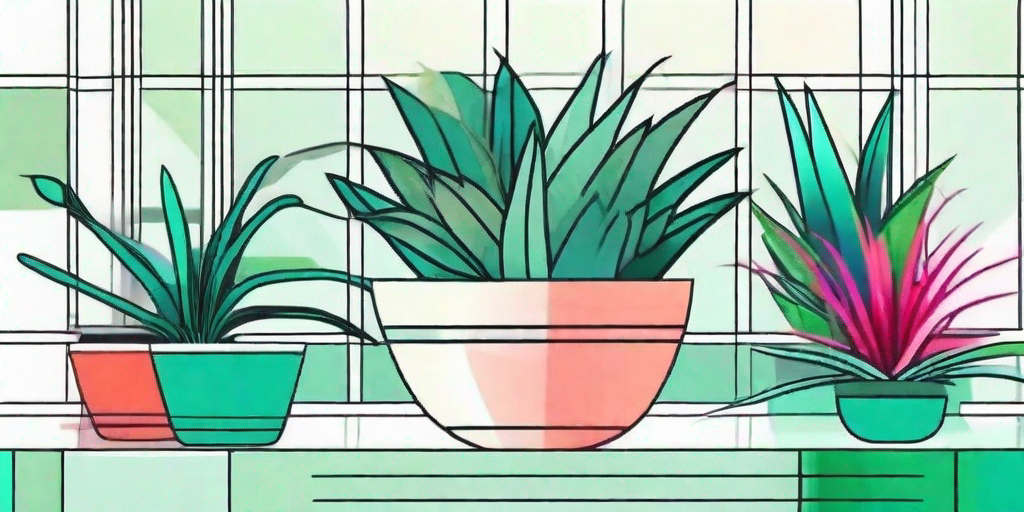
Bromeliads, the tropical charmers of the plant world, have been tickling the fancy of gardeners for centuries. With their vibrant colors, exotic patterns, and unique growth habits, they're like the flamboyant flamingos of the flora kingdom. But don't let their exotic allure intimidate you. Bromeliads are surprisingly easy to care for, and this guide will help you cultivate a bromeliad bonanza that would make even the most seasoned botanist green with envy.
Understanding Bromeliads: The Basics
Before we dive into the nitty-gritty of bromeliad care, let's take a moment to appreciate the sheer diversity of this plant family. With over 3,000 species spread across 56 genera, bromeliads come in a staggering array of shapes, sizes, and colors. From the pineapple (yes, that's a bromeliad!) to the Spanish moss dangling from your oak tree, bromeliads are as versatile as they are beautiful.
Most bromeliads are epiphytes, meaning they grow on other plants rather than in soil. But don't worry, they're not parasitic. They simply use their host as a perch from which to soak up the sun and catch rainwater. Some bromeliads are terrestrial and grow in the ground, while others are saxicolous and prefer to grow on rocks. Talk about adaptable!
The Bromeliad Life Cycle
One of the most fascinating aspects of bromeliads is their unique life cycle. Most bromeliads bloom just once in their lifetime, producing a stunning flower that can last for several months. After blooming, the plant will start to decline, but fear not! It will also start producing pups, or baby plants, from its base. With proper care, these pups will grow into mature plants and the cycle will continue. It's like a botanical soap opera!
Now that we've covered the basics, let's get down to the fun part: growing and caring for your bromeliads.
How to Grow Bromeliads: A Step-by-Step Guide
Despite their exotic origins, bromeliads are remarkably easy to grow. They're tolerant of a wide range of conditions and require minimal care. Here's a step-by-step guide to growing your own bromeliad bonanza.
- Choose Your Bromeliad: With so many species to choose from, selecting a bromeliad can be a daunting task. Consider factors such as light requirements, size, and color when making your selection. Some popular choices include the Guzmania, with its vibrant red flower, and the Aechmea, known for its striking pink bloom.
- Plant Your Bromeliad: If you've chosen an epiphytic bromeliad, you can mount it on a piece of bark or driftwood. Terrestrial bromeliads can be planted in a well-draining soil mix. Remember, bromeliads like to be snug, so don't choose a pot that's too big.
- Water Your Bromeliad: Bromeliads prefer their water in the tank, the cup-like center of the plant. Fill the tank with rainwater or distilled water, and let it overflow into the soil. Be sure to empty and refill the tank every 1-2 weeks to prevent stagnation.
- Feed Your Bromeliad: Bromeliads are not heavy feeders, but they do appreciate a light feeding every month or so during the growing season. Use a bromeliad-specific fertilizer or a diluted all-purpose plant food.
- Enjoy Your Bromeliad: Once your bromeliad is established, all that's left to do is sit back and enjoy its tropical beauty. And remember, when it starts to decline after blooming, look for pups at the base. The bromeliad saga continues!
Common Bromeliad Problems and Solutions
Like any plant, bromeliads can encounter a few problems. But don't fret, most of these issues are easily resolved.
One common issue is brown or yellow leaves. This can be caused by several factors, including too much sunlight, overwatering, or poor air circulation. Adjusting your care routine can usually resolve these issues.
Another common problem is a bromeliad that refuses to bloom. This can be frustrating, especially since bromeliads only bloom once in their lifetime. If your bromeliad is being stubborn, try moving it to a brighter location or feeding it a bloom-boosting fertilizer.
Frequently Asked Questions About Bromeliads
- Do bromeliads need sunlight?
- Yes, but the amount depends on the species. Most bromeliads prefer bright, indirect light. Direct sunlight can scorch their leaves.
- How often should I water my bromeliad?
- Water your bromeliad when the top inch of soil feels dry. Remember to fill the tank, not just the soil.
- Can I grow bromeliads indoors?
- Absolutely! Bromeliads make excellent houseplants. Just make sure to provide them with plenty of light and humidity.
- Why is my bromeliad turning brown?
- This could be due to overwatering, too much sunlight, or poor air circulation. Adjust your care routine accordingly.
With their exotic beauty and easy care, bromeliads are a great addition to any garden. Whether you're a seasoned botanist or a budding gardener, these tropical beauties are sure to bring a touch of the tropics to your home or garden. So go ahead, dive into the world of bromeliads. You won't regret it!















